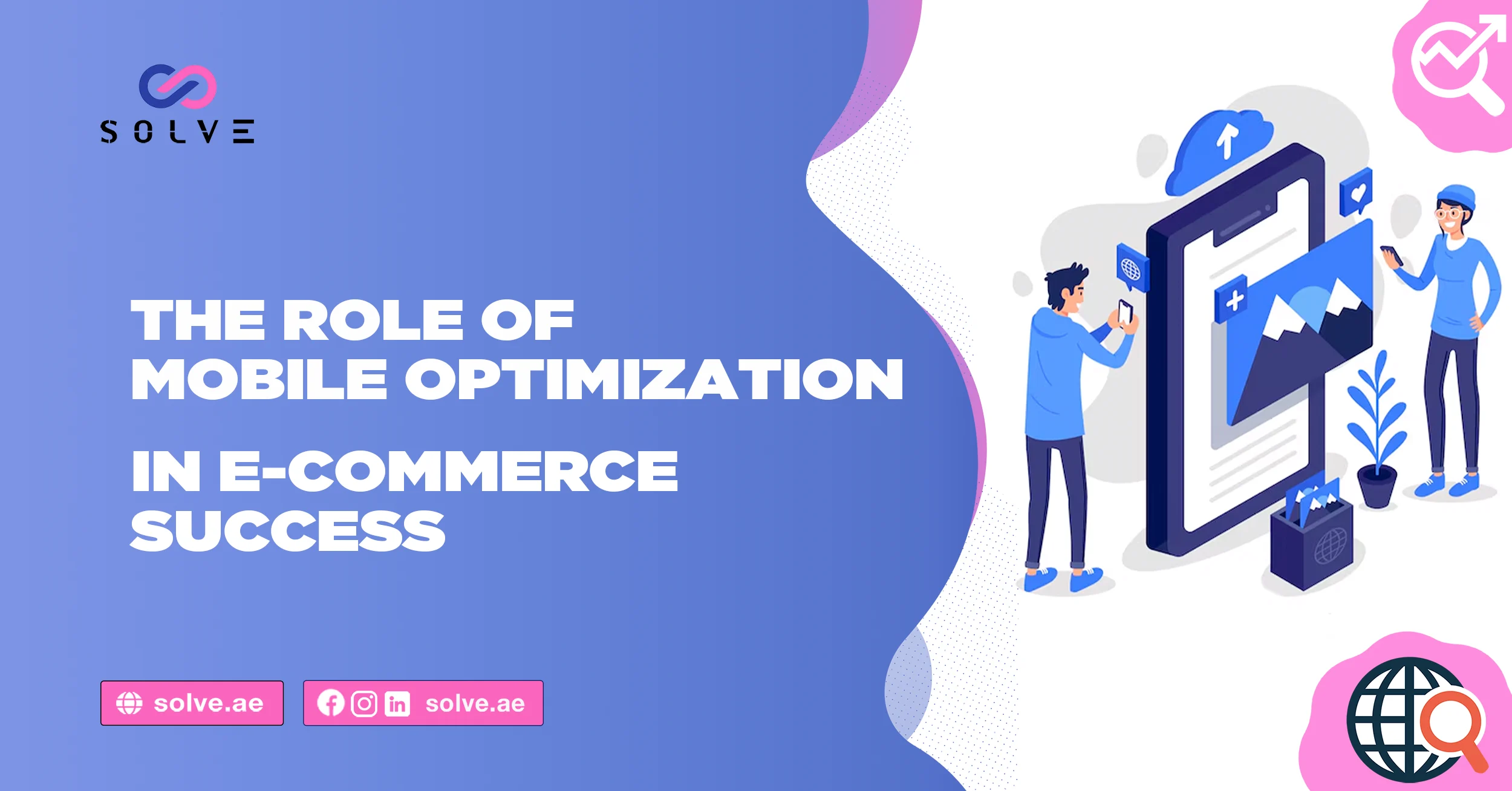- By Vanshika Choudhary
- May 24, 2025
Today, in the digital realm, online shopping increasingly happens via mobile phones. If your e-commerce site is not set for smartphones and tablets, you are basically losing potential customers and revenue. In other words, mobile optimization is ensuring a smooth experience for those who browse your site on mobile devices: fast, user-friendly, and pleasant on the eyes across any device. It was on the cusp of fantasy just ten years ago; now it is absolutely essential for any company to compete in the ever-growing market. Let us examine why mobile optimization is so important and how you can leverage it for great e-commerce results.
- Great User Experience on Mobile Devices
A great user experience is the basic foundation of a successful e-commerce site, and this is especially true on mobile. If your site is mobile-optimized, customers should efficiently browse, search, and buy your product on any device.
Responsive Design
Responsive means your site automatically resizes for the screen size, from the smallest cellphone to the largest tablet, meaning your content, images, and navigation menus look and behave appropriately on all types of devices. Customers who do not have to pinch, zoom, or scroll sideways are more likely to remain longer and explore your offerings. Responsive design keeps your branding consistent, making your company appear professional and trustworthy.
Simple, Intuitive Navigation
Mobile users expect everything to be at their fingertips. Simple navigation comprises clear-cut menus, easy-to-locate categories, and a search bar sitting comfortably on top of it all. Give way to cleanly tucked hamburger menus, drop-down lists, or collapsible sections. Customers going about your site without any confusion would not easily get frustrated and hit the exit. Intuitive navigation also lowers the barriers for newcomers to find your products and buy them.
Fast Loading Times
Speed does matter for mobile users. Should your site demand more than mere seconds to load, most visitors would up and leave your virtual store for somewhere else. You can slim down the image files and rid the trash scripts: optimized coding works wonders in that case. Fast loading times ensure users remain glued and thus lower your bounce rate, putting you at higher chances for a sale. Google, on top of that, showers sites that load faster with sky-high search rankings—who would not want speed to be on their side?
Smooth Checkout Process
A slow and cumbersome checkout process can cause many a shopper to abandon their carts. Effortless checkout on mobile with as little rigmarole as possible is what you want. Provide for guest checkout and autofill, featuring digital wallets such as Apple Pay or Google Pay. When customers pay for their purchases easily and securely, the conversion rates skyrocket.
- Bring Search Engine Rankings (SEO) to Customer Optimization
Search engines such as Google place references on a mobile-friendly interface. So if your site isn’t optimized for mobile traffic, you could be missing out on some valuable traffic and sales.
Mobile-First Indexing
Google ranks you based on the mobile version of a website. Slowness to load, difficult navigation, or a lack of content on the mobile version will result in a fall in rankings. Hence, keep in mind that if your website is well optimized for mobile, it hugely benefits your search visibility, drawing more visitors to the site and getting you more potential clients. check out our latest blog post on What Is Mobile Optimization and Why Does It Matter in 2025?
Better Local SEO
Many mobile users search for products or stores “near me.” Taking measures to optimize your site for local SEO by placing your business address, including local keywords, and registering with Google My Business enables you to participate in these searches. This matter is extra crucial if you have a physical outlet and want to attract customers in particular places. A prevailing local presence will drive more guests into your stores and sales online.
Lower Bounce Rate
Bounce rate is calculated as the percentage of visitors leaving one-page viewing. They are simpler and more engaging sites, which ensure mobile optimization, one way or the other, to keep visitors on the website. A low bounce rate sends out signals to search engines that your website is worthy and relevant; hence, it’s in this regard that search engines get to up-link you higher in organic search.
Structured Data and Rich Snippets
Adding structured data to your site adds intel to search engines to better understand its content. This has always offered rich snippets—additional information such as ratings, prices, or images—that pop up in search results. These snippets make your listings more eye-catching and could raise click-through rates and potential customers on your site.
- Optimizing for Urgency: Conversion Rates and Sales
Mobile optimization directly affects conversion rates and sales: the easier you make it for your customers to buy from you, the better offline experience they have to seal the deal online. One must have satisfaction to motivate visitors to carry through with their purchases rather than leaving their carts.
Seamless Shopping Experience
The shopping experience on a mobile is free and easy, from browsing and product researching to buying pressing sales. Browsing among product pages, managing the fresh call to action, and taking direct shortcuts to the cart flow are examples of Facebook shopping experiences. When customers find their way to check out, the faster they’ll purchase and go back in the future.
Mobile Payment Integration
Trusted mobile payment systems, mobile wallets, Apple Pay, Google Pay, and PayPal let customers pay swiftly and securely! They thus become easy, quick, and trusted payment methods for shoppers. That means more account options would equate to fewer sales barriers and encourage many customers to complete the sales.
Personalized Recommendations
Mobile sites are designed to offer important features such as personalized product recommendations depending on one’s browsing history or prior purchase history. These recommendations help customers discover new items. increase the average order value, and cause them to become repeat purchasers. Personalization also probably makes customers feel appreciated, which in turn may increase loyalty and satisfaction.
Trust & Security
Mobile users are concerned about the security aspect when shopping online. So ensure the site uses HTTPS, displays trust badges, and offers secure payment options. Also, explain your privacy policy and measures for data protection. The feeling of safety creates inclined tendencies among customers to complete the purchase; some even endorse your tout.
- Consistency Across Devices
Customers are one of those who tend to switch from one device to another halfway through the shopping journey. Hence, a consistent initiative must be provided on all platforms to keep them engaged and foster brand loyalty.
Cross-Device Synchronization
Features like syncing saved carts, saved wish lists, and saved account information across devices allow users to start shopping on one device and finish on another. This flexibility elevates the experience and puts impetus on completing purchases. Customers just want to resume with whatever they were doing, no matter on which device it is.
Unified Branding and Design
Keep your brand consistent by maintaining coordination of colors and messages to design compatibility with all devices. An ideal familiar feel provides assurance and confidence to the customers regarding the company. Whatever design is used, it must be such that all the features, from searching for products down to checkout, remain consistent everywhere to avoid confusion and frustration.
Consistent Functionality
All must-do functions, such as search, filters, and checkout, should behave similarly across all devices. Inconsistent function becomes a nuisance for users and turns them away from your store. Test regularly on various devices to ensure seamless functionality.
Customer-Support Accessibility
Have a live chat or a contact form conveniently positioned on your website to provide mobile users with on-the-spot support. A quick and positive experience will generate trust and therefore increase customer return to the website for another sale.
Conclusion
Mobile optimization is a must for any internet store. Putting your focus on user experience, SEO, conversion, and consistency across devices can gain more customers, increase sales, and create loyal customers. Don’t let your store lag behind in the mobile age.
Call us today to get the lowdown on how to make mobile optimization work for your e-commerce website, and this way get your business ahead!




